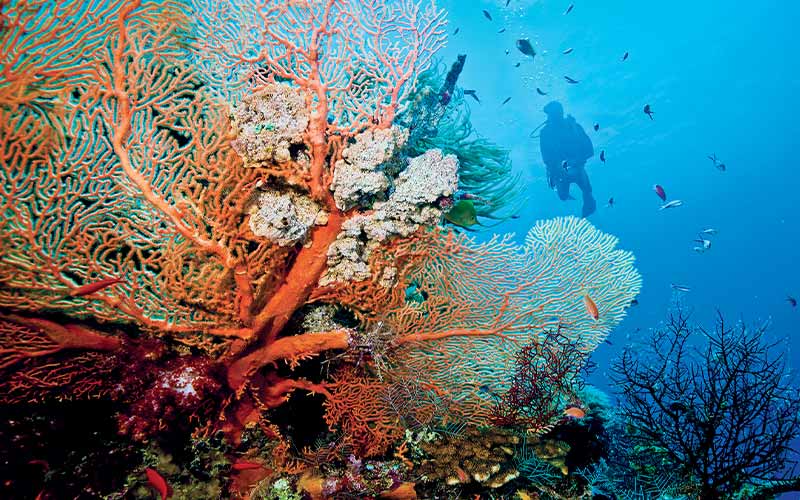Tubbataha is a seasonal destination, best accessed from March through June, when the Sulu Sea is calmer. It’s recognized as one of the Philippines’ marquee attractions for wide-angle vistas and pelagic sightings. Consider this email I recently received from Randy Wright, captain of the Atlantis Azores liveaboard, describing his week on charter:
“Just back from Tubbataha and my best week of diving in years. Multiple whale shark encounters, mantas on several dives, heaps of sharks and jacks, etc. Dozens of turtles … felt like Sipadan! Eagle rays, and on our last dive of the week we got a whale shark and then a great hammerhead about 2 minutes later! Could not have planned it better. Best week of diving in the Philippines without a doubt! Of course, I had no camera coz I was leading all the dives … just a huge folder of mental snapshots.”

I had been to Tubbataha with a group just the month prior, and we had some incredible diving, particularly with beautifully decorated walls and absolutely pristine concentrations of hard corals. However, we did not experience the high-voltage pelagic sightings Randy so enthusiastically describes. But I guess that’s how it goes in a locale situated atop the Cagayan Ridge in the heart of the Sulu Sea, 90 miles and a 10-hour steam from Puerto Princesa. Things change day to day, depending on the critters in residence. Gratefully, even beyond the rare and wonderful megafauna, Tubbataha delivers consistent dive excellence.
Tubbataha is an atoll, a volcanic seamount that gradually sank, leaving a circular substrate for coral colonization, now punctuated by a few low-profile sand islands. Home to 359 species of coral, 600 species of fish, 56 species of invertebrates, 12 species of sharks, and abundant populations of two different turtle species, Tubbataha is a nearly 250,000-acre United Nations Educational, Scientific and Cultural Organization (UNESCO) World Heritage Site. As such, it is common property of the world, but the Filipinos have the primary responsibility of conservation and enforcement. Rangers are in residence year-round to prevent poaching and to ensure the impressive congregations of seabirds are left unmolested.
© Alert Diver — Q3 Summer 2011